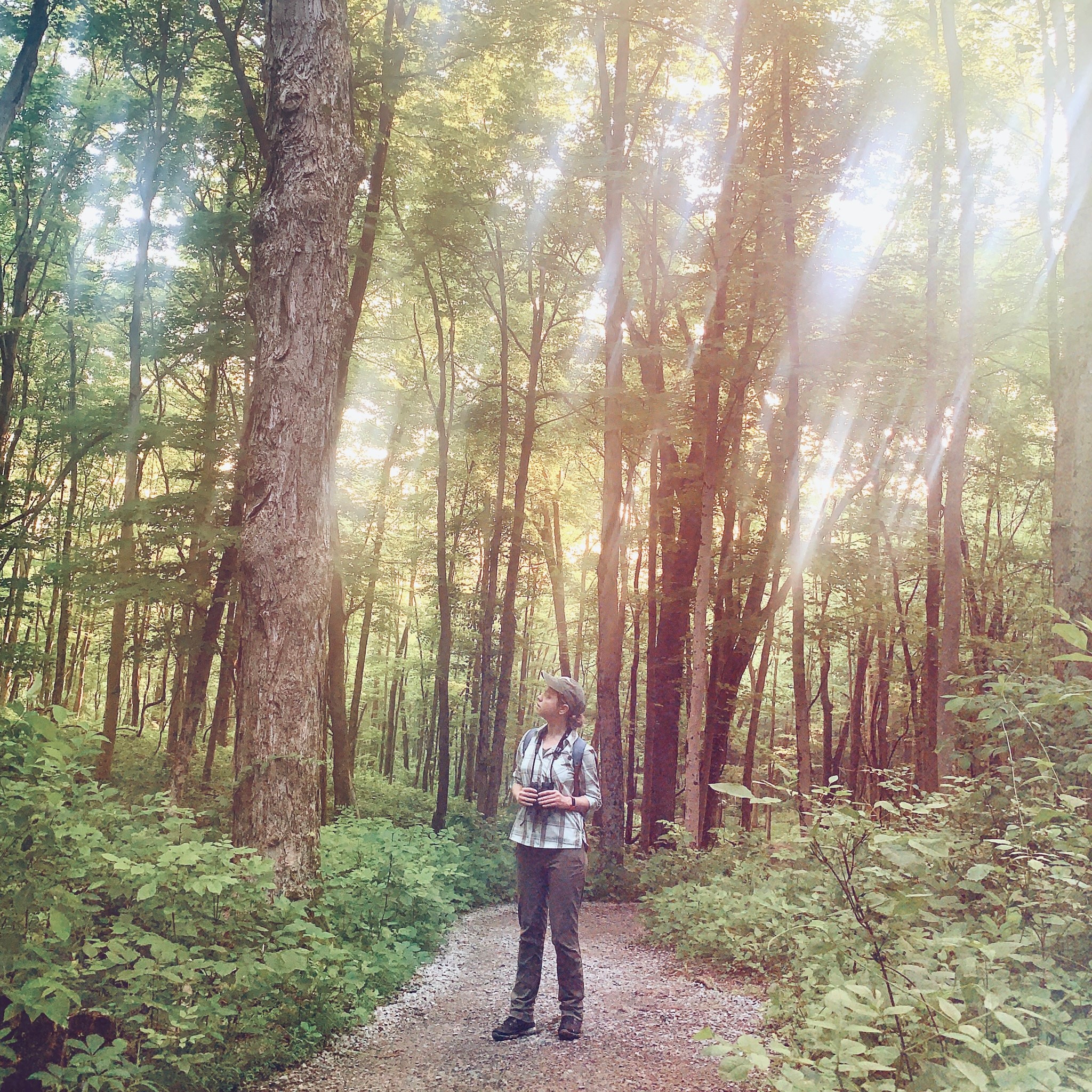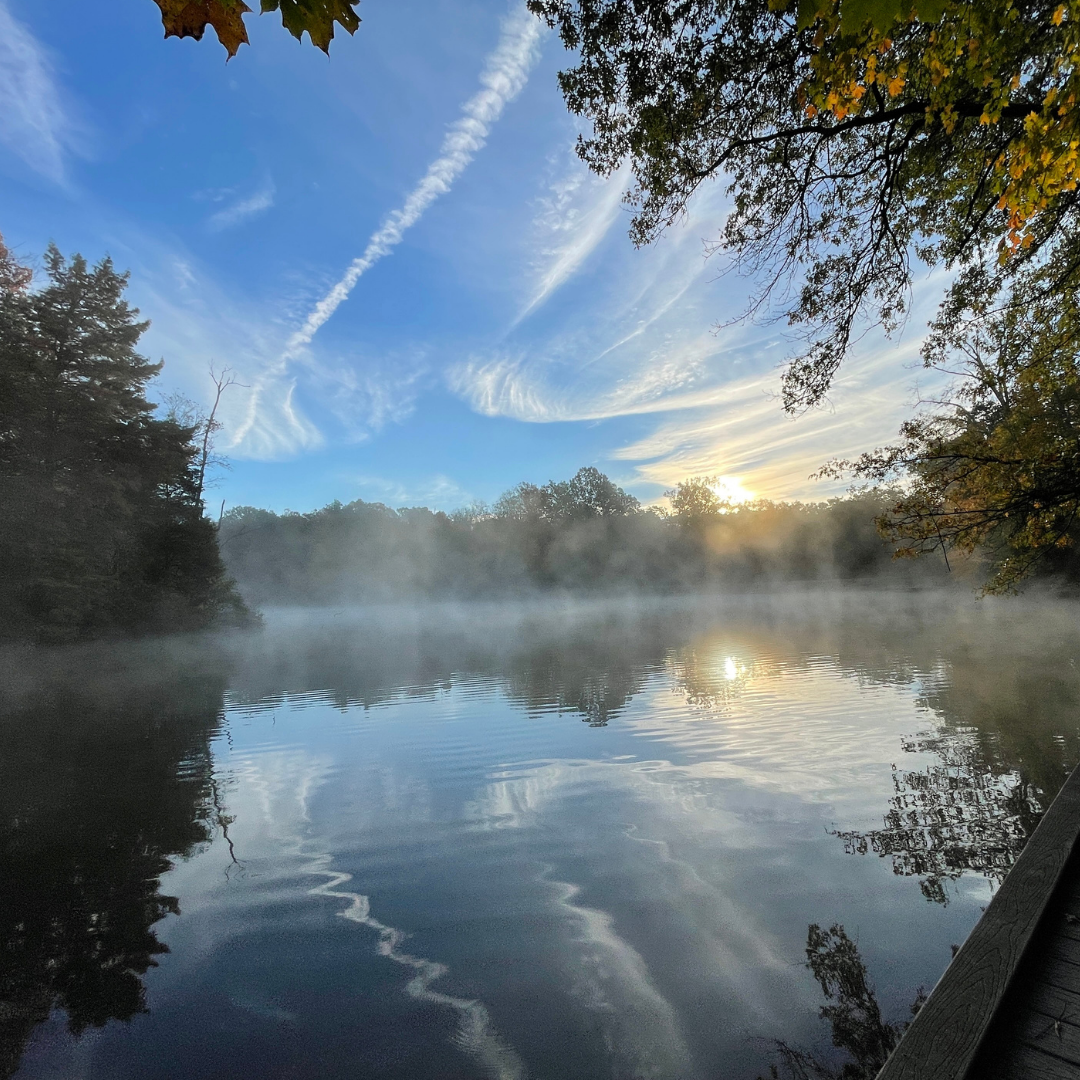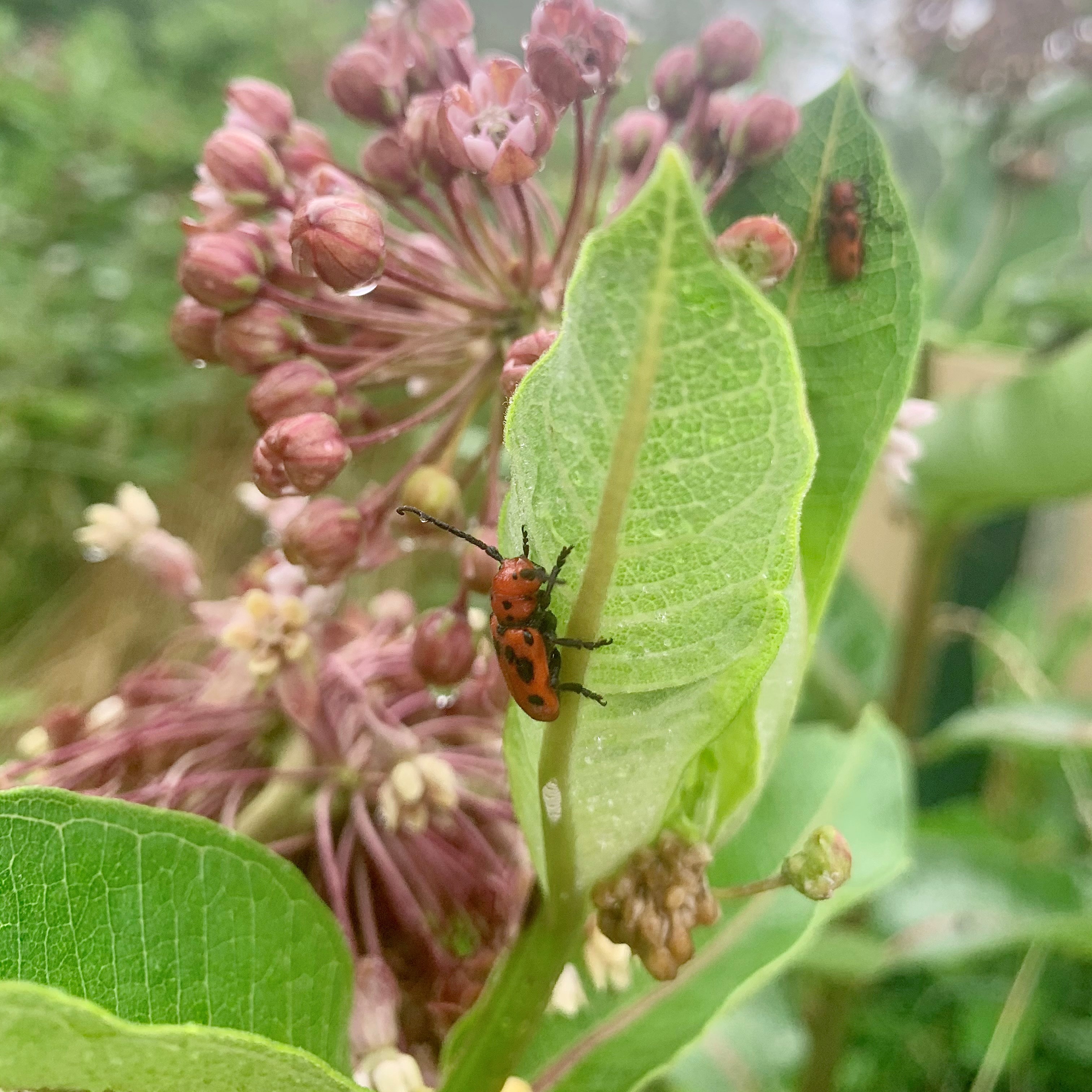Blog
Why the World Is So Big

by Olivia Bautch, Environmental Interpretation Intern
For over 14 years, I have been a birdwatcher, observant of both murmuration and chip calls, fascinated by both fierce falcon and miniscule kinglet. Between personal interest and volunteering for surveys, I had become trained to notice even the slightest rustle of leaves.
But when a rustle of leaves was an indication of any creature but a bird, I would shrug it off and continue along the path. This is not to say that I had an opposition to anything that was not a bird. I was just…indifferent.
Where along the way did my horizons broaden? I cannot pretend to pinpoint some particular experience, but a thousand little moments. It is something about slowing down and focusing enough to observe and empathize with creatures in a way one cannot be trained. It is an action that I have realized—or maybe returned to— through the involuntary silence of the last year.
And then I came to this place.

There is, at least to me, something transformative about the nature of our beloved tract of land at the Nature Center. Something that calms your apprehension and refutes your prejudices towards the creepy, crawly and unknown. Something that encourages you to (safely and ethically) pick up that insect or snake. It urges you to consider the ecological purposes of the unnoticed. Between knowledge and a sensory experience, you find yourself enamored with the entirety of creation.
One of the greatest joys so far in my internship at the Nature Center is seeing this fondness grow in the children I teach. The child terrified of the seeming insect apocalypse outside of their school, when presented to in the right way, will end the day laughing as they hold the very origin of their fear.
The little girl who refuses to get wet will enter the water for the most delicate of salamanders. I watch various interpreters present material and take it in, hoping only to bring this heart-change to children as it has begun in myself.
After all, the world—even our backyard—is filled with biodiversity. Plants and animals all designed with roles to keep the planet running. There are just over 1,100 species of birds alone that have been found in the United States. Add to that plants, fish, insects and everything else…what a wonder for us to find!

As I walk back home from watering native plants in the greenhouse, I stop to check for monarch caterpillars at the milkweed patch. Instead, I find dozens of hardworking bumblebees, red milkweed beetles, and other varying insects I cannot yet identify.
I notice a young red-spotted newt on the side of the road, its rubbery red contrasting with the gray of the pavement. A rustle of leaves appeals to my birdwatching senses. Although not a bird, I recognize the brown lizard appearance of a skink (until coming here I had never even heard of a skink). Songs of the Carolina Wren, Eastern Bluebird, and Scarlet Tanager fill the open air between trees, while a fluttering swallowtail guides me home.
It’s the little moments. Maybe it’s the birds, maybe for some it is the plants, or the snakes. Maybe it’s everything all at once—an overwhelming harmony. Take it in, not just here in Ohio, but everywhere.
When everything on earth is here for us to mindfully enjoy and restore, why should some remain unseen? As one songwriter says, “I’ve got to figure out why the world is so big”.